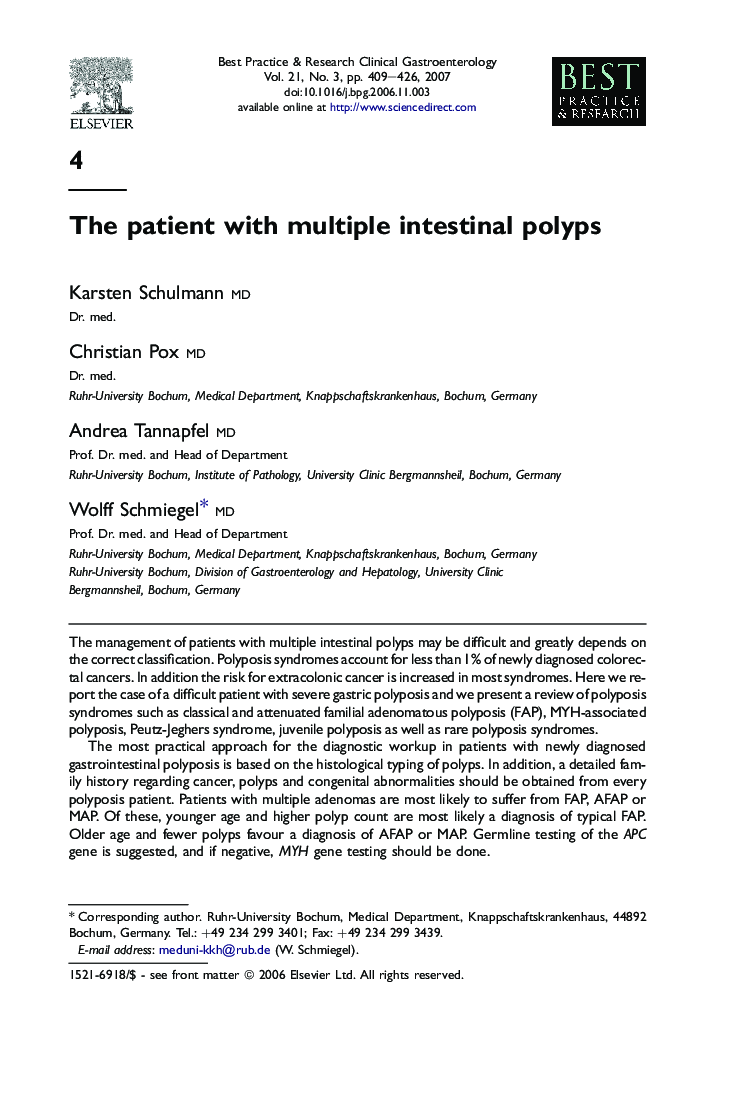| Article ID | Journal | Published Year | Pages | File Type |
|---|---|---|---|---|
| 3254505 | Best Practice & Research Clinical Gastroenterology | 2007 | 18 Pages |
The management of patients with multiple intestinal polyps may be difficult and greatly depends on the correct classification. Polyposis syndromes account for less than 1% of newly diagnosed colorectal cancers. In addition the risk for extracolonic cancer is increased in most syndromes. Here we report the case of a difficult patient with severe gastric polyposis and we present a review of polyposis syndromes such as classical and attenuated familial adenomatous polyposis (FAP), MYH-associated polyposis, Peutz-Jeghers syndrome, juvenile polyposis as well as rare polyposis syndromes.The most practical approach for the diagnostic workup in patients with newly diagnosed gastrointestinal polyposis is based on the histological typing of polyps. In addition, a detailed family history regarding cancer, polyps and congenital abnormalities should be obtained from every polyposis patient. Patients with multiple adenomas are most likely to suffer from FAP, AFAP or MAP. Of these, younger age and higher polyp count are most likely a diagnosis of typical FAP. Older age and fewer polyps favour a diagnosis of AFAP or MAP. Germline testing of the APC gene is suggested, and if negative, MYH gene testing should be done.In patients with hamartomas, extraintestinal features should be evaluated and reference histology should be initiated. In addition panintestinal imaging should be performed with EGD, colonoscopy and small bowel imaging (PE, CE, and MR) enteroclysis. For diagnostic and therapeutic problems a familial colorectal cancer center should be consulted. Using this algorithm, correct classification and adequate treatment should be possible for every polyposis patient.
